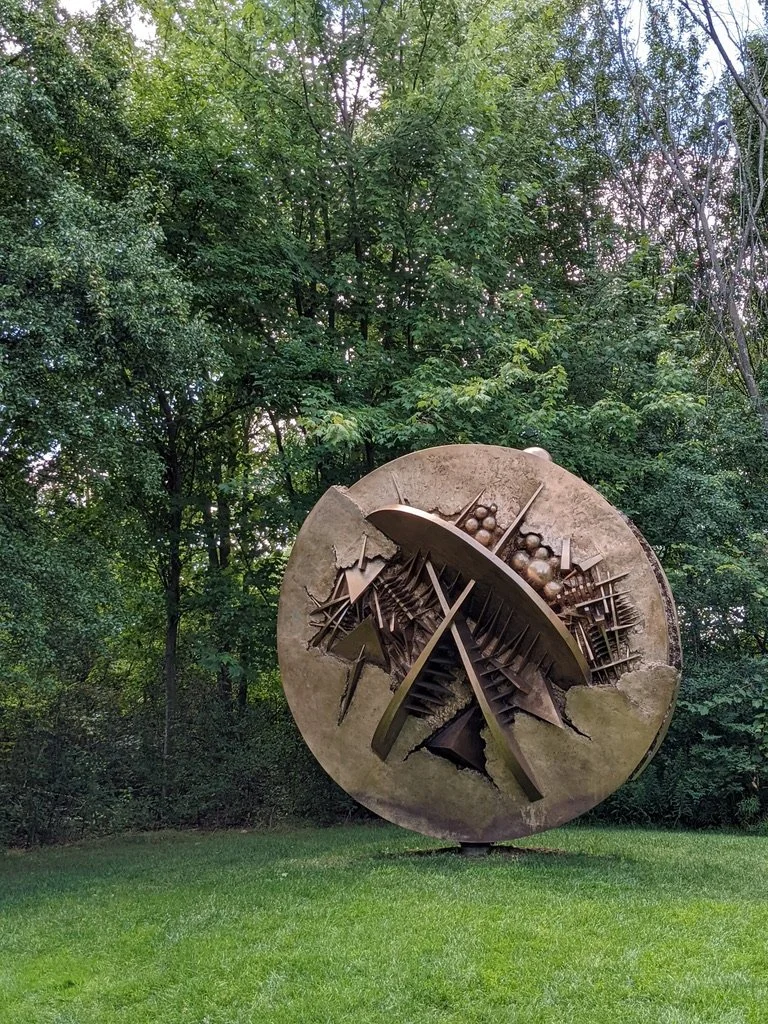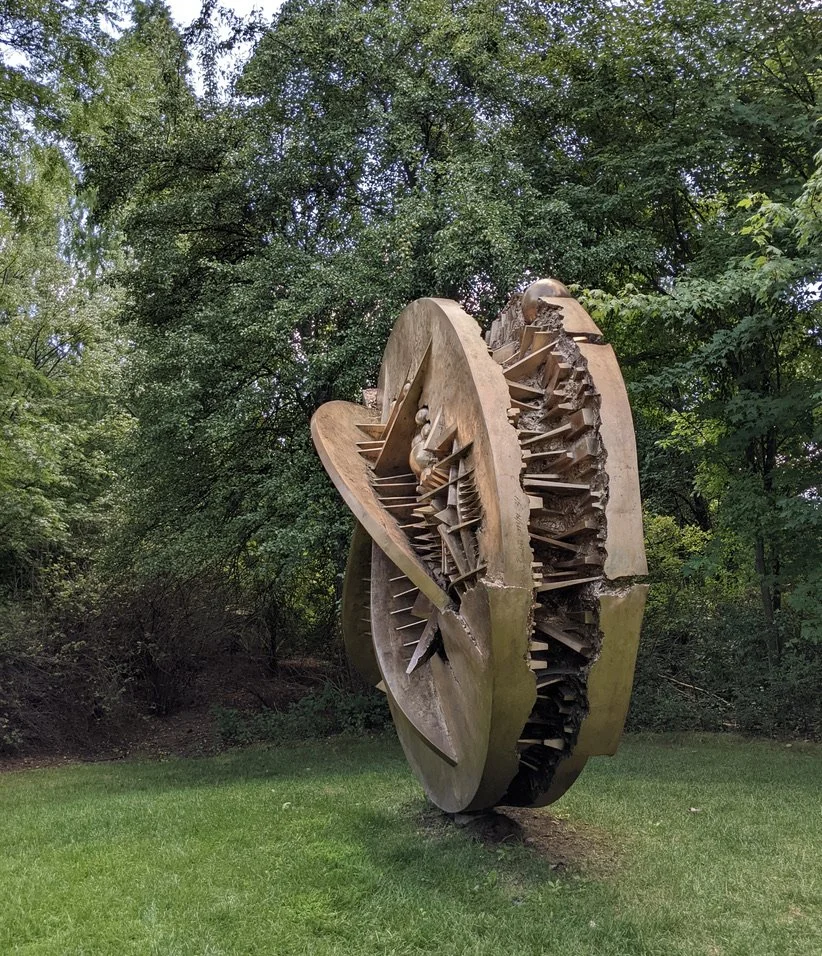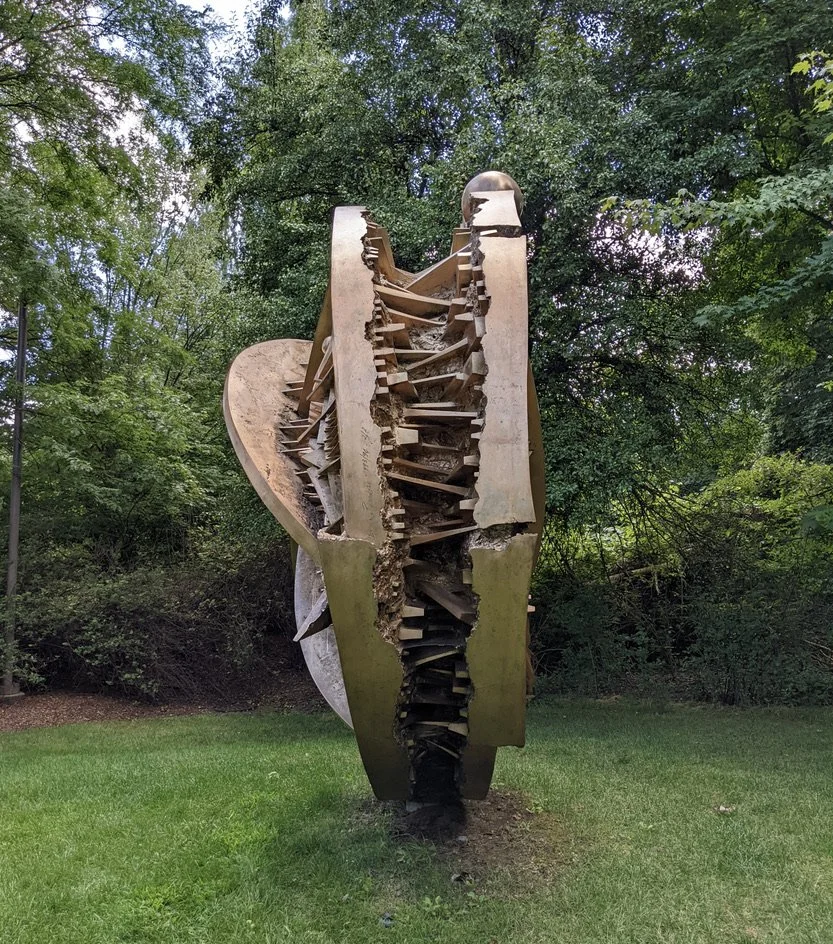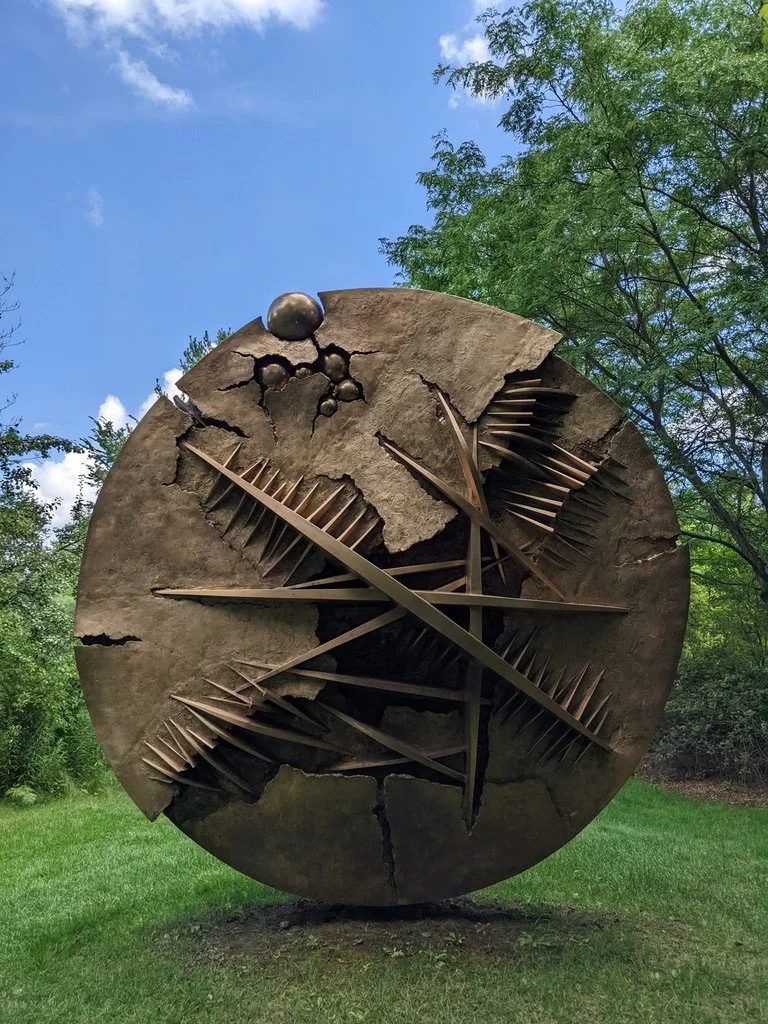The Italian sculptor Arnaldo Pomodoro (b. 1926) came into adulthood in Italy during the second World War and, until 1957, spent the post-war years working as a civil engineer, consulting on the restoration of public buildings in Pesaro. However, he also followed his artistic interests during this time, learning to cast as a goldsmith, studying theater design, and meeting other Italian artists and architects, including Lucio Fontana and Enrico Baj.
Although he was already producing artwork by the mid-fifties, with the first exhibit of his sculpture occurring in 1955, his travels to New York and around Europe from 1956 to the early 1960s were crucial to the development of his mature style. His travels exposed him to the works of Constantin Brâncuși and allowed him to meet the painter Georges Mathieu and the sculptors Alberto Giacometti, Louise Nevelson, and David Smith. Brâncuși’s pristine, mirror-like surfaces and nearly geometric shapes were likely particularly important reference points for Pomodoro, as his own mature work appears to both play with and push against the perfect wholeness of Brâncuși’s casts. Indeed, many of Pomodoro’s sculptures, including those in his famous Sphere within Sphere series, take the form of large-scale geometric shapes with Brâncuși-like surfaces seemingly broken to reveal complex, possibly mechanical, internal structures. Or, as stated on Pomodoro’s website, the “solid geometric” forms “are lacerated, corroded, excavated in their depths, with the intention of destroying their perfection and discovering the mystery closed within.”
Disk in the Form of a Desert Rose (1993–94), a cast of which is installed at the Frederik Meijer Gardens and Sculpture Park in Grand Rapids, Michigan and pictured here, is a relatively late work by Pomodoro. The sculpture consists of a giant, upright disk, its “skin” torn and its structure ripped apart by a mass of curving ridges, sharp-edged blocks, and clusters of spheres that appear to have grown, crystal-like and parasitic, from inside. Rather than the smooth shininess or dramatically contrasting finishes that typified his earlier sculptures, Pomodoro has employed a worn, mottled surface that serves to further the impression the disk has been damaged, not by external attacks, but by the unimpeded growth of its own internal structures—by the force of the new replacing the old.
Web Sources (click green text for link):
Erin Clancy, Culture Trip, “Past, Present And Future In The Art Of Arnaldo Pomodoro.” [retrieved 12-3-22]
Frederik Meijer Gardens and Sculpture Park, “Disk in the Form of a Desert Rose.” [retrieved 12-4-22]
Guggenheim Museum, Collection Online, “Arnaldo Pomodoro.” [retrieved 12-3-22]
Arnaldo Pomodoro [website for artist and foundation], “Biography.” [retrieved 12-3-22]



